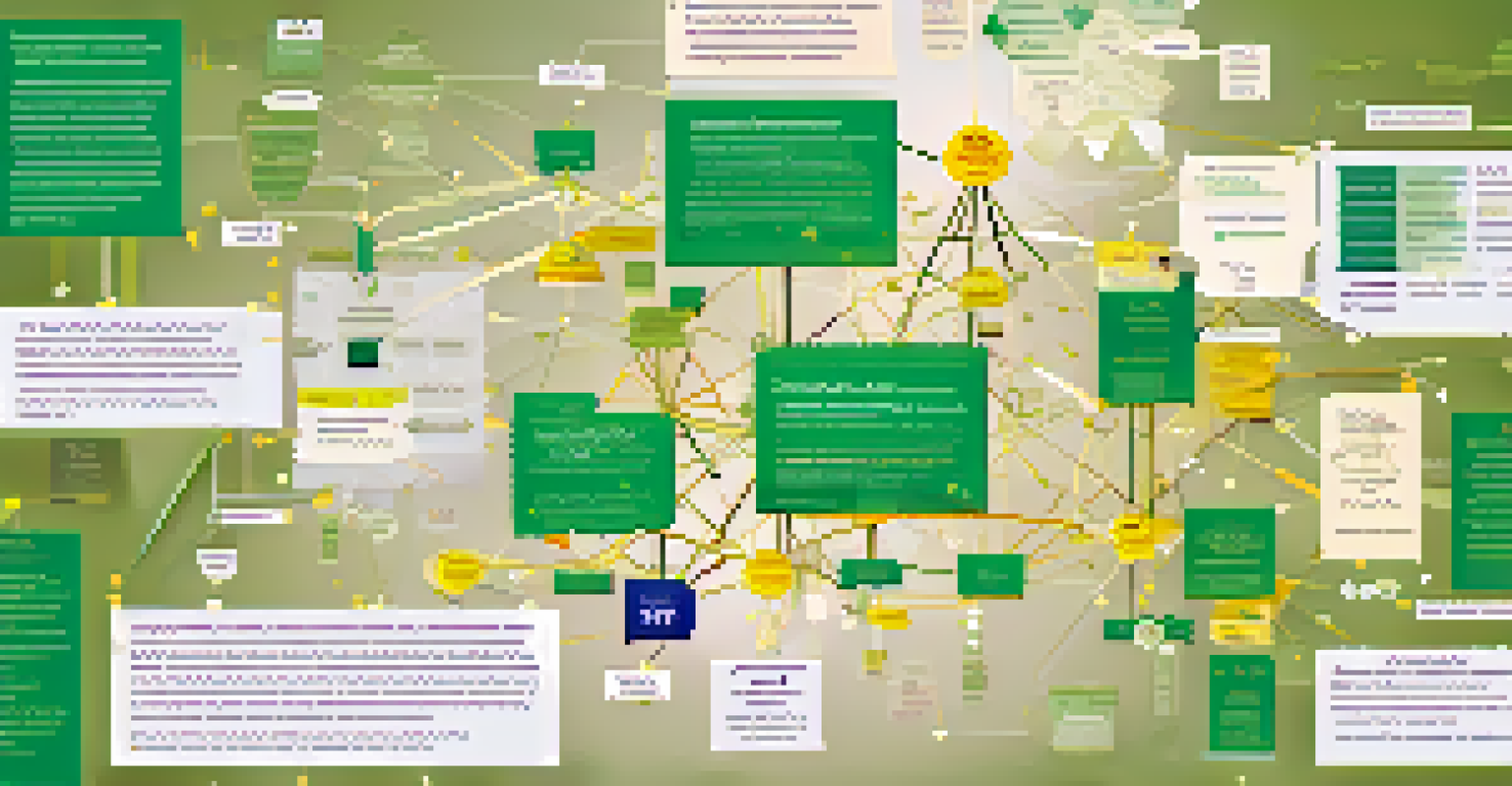How NFTs Can Redefine Ownership in Journalism Today

Understanding NFTs: A Brief Introduction
Non-fungible tokens, or NFTs, are unique digital assets that represent ownership of specific items or content on the blockchain. Unlike cryptocurrencies like Bitcoin, which are interchangeable, each NFT is one-of-a-kind, giving it distinct value. This uniqueness opens up new possibilities for ownership in various industries, including journalism, where originality and authenticity are paramount.
NFTs offer a new way for creators to monetize their work and establish a direct relationship with their audience.
In the context of journalism, NFTs can serve as a digital certificate of authenticity for articles, photographs, or videos. Imagine owning a piece of investigative journalism as an NFT; it not only proves the content's originality but also connects you to the creator. This concept challenges traditional ownership models and invites discussions about what it means to own a piece of information.
By understanding NFTs, journalists and media organizations can explore innovative ways to engage their audience while maintaining control over their work. As we delve deeper into how NFTs can redefine ownership in journalism, we'll see how this technology can empower both creators and consumers.
The Shift from Ownership to Provenance
Traditionally, ownership in journalism has been straightforward: a publication owns the content, and readers consume it without a sense of direct connection. However, NFTs introduce the concept of provenance, which tracks the origin and ownership history of a digital asset. This shift allows journalists to establish a more direct relationship with their audience.

With NFTs, readers can purchase and own unique versions of articles or digital artwork, knowing they have a piece that comes directly from the creator. For example, a well-researched investigative piece could be sold as an NFT, providing the buyer not only with the article but also insights into its creation process. This kind of transparency builds trust and encourages deeper engagement.
NFTs Redefine Ownership in Journalism
NFTs provide a new model for ownership that connects creators directly with their audience, allowing for authentic engagement and trust.
The ability to trace ownership back to the original creator adds value to journalistic work and can transform how news is consumed. As audiences increasingly seek authenticity and connection, the provenance offered by NFTs may become a key factor in their media choices.
Empowering Journalists and Content Creators
NFTs provide journalists with a new revenue stream that can help sustain their work. Instead of relying solely on advertising or subscriptions, creators can sell their articles, images, or videos directly to their audience. This model not only increases potential income but also fosters a sense of community among supporters.
The future of journalism could be significantly shaped by the integration of NFTs and blockchain technology.
For instance, a journalist could create a limited edition NFT of a groundbreaking article that includes exclusive behind-the-scenes content or interviews. Buyers would not only get access to the article but feel a personal connection to the work and the journalist themselves. This creates a new dynamic that enriches the reader's experience.
By empowering journalists to monetize their work directly, NFTs can help combat the financial challenges faced by many in the industry today. As we explore further, we'll see how this empowerment can lead to more diverse voices and stories being told.
Redefining Intellectual Property Rights
NFTs challenge traditional notions of intellectual property rights in journalism. With digital content easily replicable, ownership has often felt murky, leading to disputes over copyright and plagiarism. NFTs can clarify these issues by providing a clear chain of ownership and rights management for each piece of content.
When a journalist mints an article as an NFT, they can set specific conditions for its use and distribution. This means they can license their work while retaining ownership, ensuring that they benefit from its use in various ways. For example, an NFT could allow a buyer to display the article on their website while providing the journalist with royalties from any subsequent usage.
New Revenue Streams for Journalists
By selling content as NFTs, journalists can diversify their income sources beyond traditional advertising and subscriptions.
By redefining intellectual property rights through NFTs, journalists can protect their work more effectively and ensure they receive fair compensation. This shift could lead to a more equitable media landscape and encourage journalists to create innovative content without fear of losing their rights.
Enhancing Audience Engagement and Interaction
NFTs not only change ownership but also enhance how audiences engage with journalism. By purchasing an NFT, readers become stakeholders in a story or piece of work, creating a sense of investment and connection. This interaction can foster a more engaged and loyal audience.
For example, journalists might offer their supporters exclusive access to behind-the-scenes content or live Q&A sessions through NFTs. This type of engagement makes readers feel valued and part of the journalistic process, leading to a deeper appreciation for the work being produced. It transforms passive consumption into active participation.
As journalists explore these new interactive avenues, we might see a shift in how stories are told, with more emphasis on collaboration and community. This engagement can ultimately lead to richer storytelling and a more informed audience.
Challenges and Considerations in the NFT Space
While the potential for NFTs in journalism is exciting, there are also significant challenges to consider. The environmental impact of blockchain technology, particularly proof-of-work systems, raises concerns about sustainability. Journalists and media organizations must weigh these factors when deciding to adopt NFTs.
Additionally, the NFT market can be volatile and speculative, creating risks for both creators and buyers. Journalists must navigate this landscape carefully, ensuring that they understand the implications of selling their work as NFTs. It's essential to approach this new frontier with a well-researched strategy rather than jumping in impulsively.
Challenges in the NFT Landscape
The adoption of NFTs poses challenges, including environmental concerns and market volatility, which journalists must navigate carefully.
Finally, as the NFT space evolves, legal and regulatory frameworks will need to catch up. Journalists should stay informed about these developments to protect their rights and understand their responsibilities in this new ownership model.
The Future of Journalism with NFTs
The future of journalism could be significantly shaped by the integration of NFTs and blockchain technology. As more journalists explore this innovative avenue, we may witness a transformation in how news is reported, consumed, and valued. The potential for direct ownership and engagement could lead to more diverse content and voices in the media landscape.
Furthermore, as audiences become increasingly aware of and invested in the content they consume, we might see a shift towards more ethical journalism practices. Journalists could feel empowered to produce stories that resonate with their community, knowing they have a reliable way to monetize their work.

Ultimately, the adoption of NFTs in journalism could herald a new era of creativity, accountability, and connection between journalists and their audiences. The possibilities are vast, and as we continue to explore this evolving landscape, it's crucial to remain open-minded and adaptable.